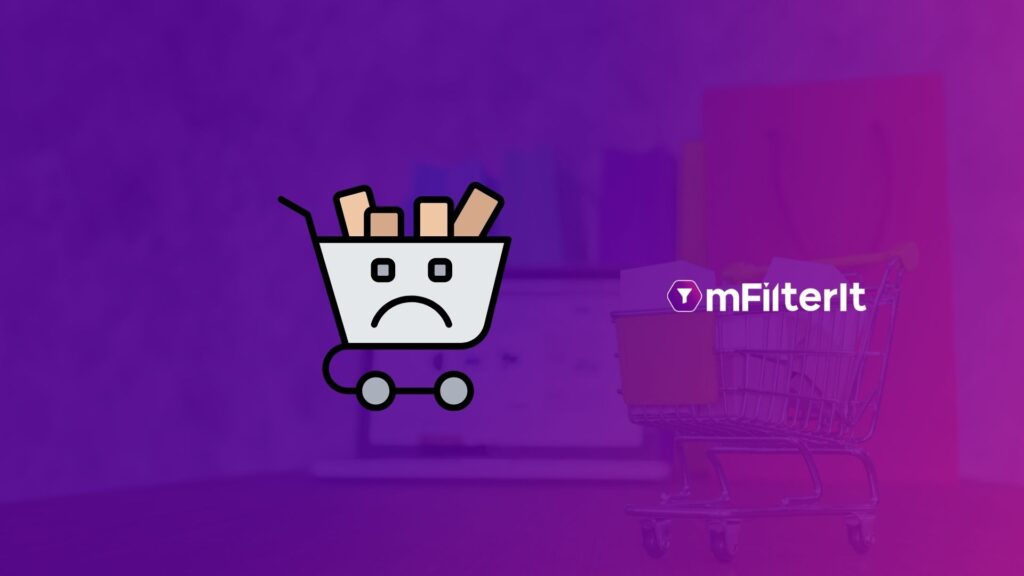Cart abandonment means a customer added your product to their cart but never completed the transaction. It is frustrating for brands because they are so close to a sale, yet all efforts fall flat when the carts are deserted.
Brands calculate cart abandon rate by dividing overall transactions by total initiated conversions. The global cart abandonment rate has fluctuated between 68.07% and 69.8% between 2014-and 2020. So, nearly 70 out of 100 customers leave the eCom store without conversion.
Regionally, the online cart abandonment rate is the highest in Middle East & Asia at 90.88%. Brands work relentlessly to figure out the reasons for cart abandonment and have discovered that high shipping costs, price comparison, out-of-stock, etc., are some of them.
But, the severity of cart abandonment is more significant for businesses, as they spend tremendous hours and money on optimizing marketing and advertising efforts. A high abandoned cart rate makes all these efforts wasteful.
Why Consumers Abandon Carts on eCom Stores?
Unexpected Shipping Costs
Online shopping is a matter of convenience. One can shop at their time in the comfort of their own space. The catalyst that makes it an even more enticing option is the brand’s pricing and discounts online to lure its customer base.
However, while this leads to impulsive add-to-cart actions, it doesn’t assure a guaranteed sell. It has been observed across ecommerce platforms that many listings do not display shipping charges upfront, which is instrumental in making or breaking a sale. This happens to be the last leg of completing a transaction.
According to sources, most consumers that don’t make bulk purchases often face heavy shipping charges if they don’t meet the minimum basket cost. So, while the consumer is delighted with the product price, the shipping cost becomes a deciding factor for looking at other sources, even nearby brick & motor retail stores. On the other hand, some consumers might not worry about the shipping cost until it is a substantial percentage of the order value.
A survey reveals that 41% of customers abandoned their carts for this very reason. Imagine paying nearly half the price of the book as delivery charges. Would you pay? Many customers would look away. Nowadays, shipping costs are mentioned on the product pages; however, even stores like Amazon India do not display them in their product listing.
Low Price on Alternate Stores
Digital shoppers have the flexibility of reviewing multiple seller prices on different eCom platforms. Low price on the alternate store has also become a reason for cart abandonment before checkout. According to a survey, 18% of consumers don’t make a transaction because of price comparison.
eCom store app notifications and emails to consumers might not prove effective once the consumer has abandoned the cart after finding a lower price on alternative eCom stores. This scenario is more likely to happen for quick commerce.
Simultaneously, loyal customers might try to find the same quantity of their lovable brand at alternate stores while abandoning the cart. Therefore, the silver lining here is that the brand doesn’t lose its customer base and gets a deeper understanding of pricing, one of the essential pillars of digital commerce.
Out-of-Stock During Checkout
“Lightning deals” or “only two more available” indeed sound enticing, especially while shopping online, as they display hefty discounts or products at unbelievable prices. However, many consumers, including me, have faced another message, “this product is no longer available,” during checkout.
According to a 2019 report, 28% of consumers have reported “out-of-stock” as the reason for abandoning their cart. Unavailability due to mismanagement of stock-keeping units (SKUs), tracking systems, seller issues, etc., are no longer news to brands.
Besides this, out-of-stock during checkout often highlights the seller and makes both brand & seller unfavorable in the eyes of potential consumers. As a result, OOS during checkouts doesn’t only lead to drawbacks associated with it but also creates long-term disadvantages associated with cart abandonment.
Better Discounts on Alternate Stores
While low price is an incentive for online shoppers, promotions and discounts play vital roles. Consumers often use multiple resources to find additional discounts, offers, or promotions on products already available at a low price. In 2018, one of the common reasons for 46% of U.S. consumers abandoning carts was a “non-working discount code.”
However, even if the discount code works, the consumers are likely to compare prices on alternate eCom stores and include pricing intelligence in the buying decision. Therefore, tracking competitor prices, discounts, promotions, and offers becomes vital for brands that want to reduce their cart abandonment rate and increase revenue.
Other reasons for knowing all four factors are understanding your brand’s competitive edge in the market, consumer behavior, and highest/lowest values.
Diminishing Cart Abandonment with eCom Competitive Analytics
Cart abandonment has been a significant reason for losing eCom revenue or building a smooth consumer journey. Shopify states that eCom stores face a potential loss of $18 billion in annual revenue to cart abandonment, which states that brands often fail to build actionable marketing strategies.
eCom Competitive Analytics, a.k.a., mScanIt, enables businesses to navigate this dynamic space with detailed insights and actionable items. Simultaneously, brands can track competitor performance across eCom stores and build strategies around real-time inputs.
Takeaway
Cart abandonment would never decrease on eCom platforms. However, businesses can certainly diminish the cart abandonment rate with valuable insights and simultaneously increase the online conversion rate using mScanIt insights.
While insights offer multifold advantages, knowing the competitor’s intelligence in the market also provides many advantages. These include understanding consumer behavior, finding scalability alternatives, comparing analytics with company sales to know marketing conversions, etc.
Leave us a comment, or connect with us to learn more about the benefits of eCom Competitive Analytics for your brand.



